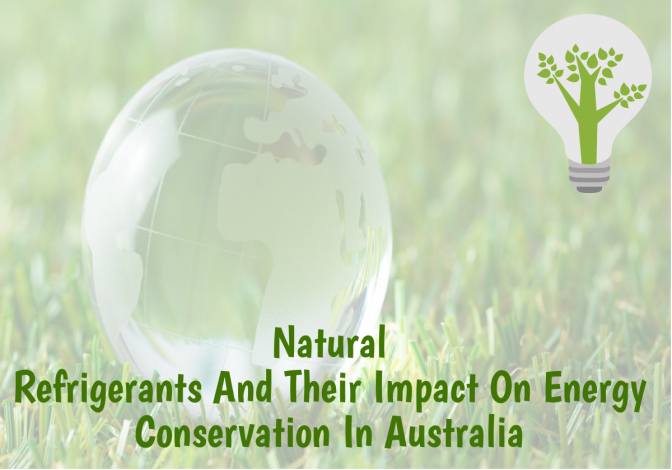14 Dec 2017 2 mins read Refrigeration News

In Australia, many industrial refrigeration and air conditioning equipment use fluorocarbon refrigerants to facilitate heat transfer. Fluorocarbon refrigerants are synthetic chemicals that normally have a very high GWP (Global Warming Potential), and some even have the potential to inflict damage to the ozone layer if released into the environment.
Substitutes for Fluorocarbon Refrigerants
Substitutes for these chemicals are accessible, which can aid in minimising some environmental risks. They are known as ‘Natural Refrigerants’ because these substances are also available in nature, and these substitutes include carbon dioxide, hydrocarbons and ammonia. These substances have already been used in the past as refrigerants for many years; however, they are now finding their way into applications where earlier fluorocarbons were the favoured alternative.
Natural refrigerants offer twin benefits for companies – by lowering their energy consumption, they not only curtail costs but also aid in protecting the environment.
Benefits of Natural Refrigerants
Natural refrigerants are economical, available in plenty and can cover almost all refrigeration, including industrial refrigeration applications already present. Moreover, when compared to synthetic refrigerants, natural refrigerants have a very low GWP. This reason is sufficient to recommend their use. Nonetheless, it’s equally essential that they are highly energy-efficient because over 80% of the GWP presented by refrigerating and air conditioning systems are the outcome of system energy consumption and not due to refrigerant leaks.
Energy Consumption and Savings Potential
As of today, roughly 15% of Global Power Consumption is used to generate refrigeration, which results in great savings potential. Steps to saving energy throughout the complete service life of refrigerating systems are attaining more prominence and can aid substantially in reducing the yoke on the environment.
The Future of Natural Refrigerants
As far as the future is concerned, all things point towards using natural refrigerants in both economic and ecological terms to shield the environment and capital expenditure in the long term. Indeed, natural refrigerants have caught the spotlight due to their exceptional environmental credentials.
Way back in history, naturals were the original refrigerants. About 100 years ago, at the beginning of mechanical refrigeration, carbon dioxide, ammonia, and hydrocarbons were among the few available cooling industry alternatives.
Properties and Applications of Natural Refrigerants
The physical properties of natural refrigerants made them quite hard to handle, so they fell out of preference. Hydrocarbons are combustible, ammonia is toxic, and carbon dioxide is a high-pressure gas; however, they have vital plus points to their credit. Ammonia has no GWP value, and hydrocarbons and carbon dioxide have a low GWP.
When HFC (Hydrofluorocarbons) refrigerants came under the analysis of the regulators, once again, the industry looked towards natural as the probable solution. Every natural refrigerant has its place in the system, and hydrocarbons, CO2 and ammonia are all exceptional alternatives when used in the proper application.
Considerations for Engineers and End-Users
Possibly, it’s prudent to say that engineers and end-users may require reviving their memories about the right applications. End users should look cautiously at what is for every project, as naturals may not be the right fit for all types of installations.
For any questions related to refrigeration, don’t hesitate to get in touch with us at JD Refrigeration.
